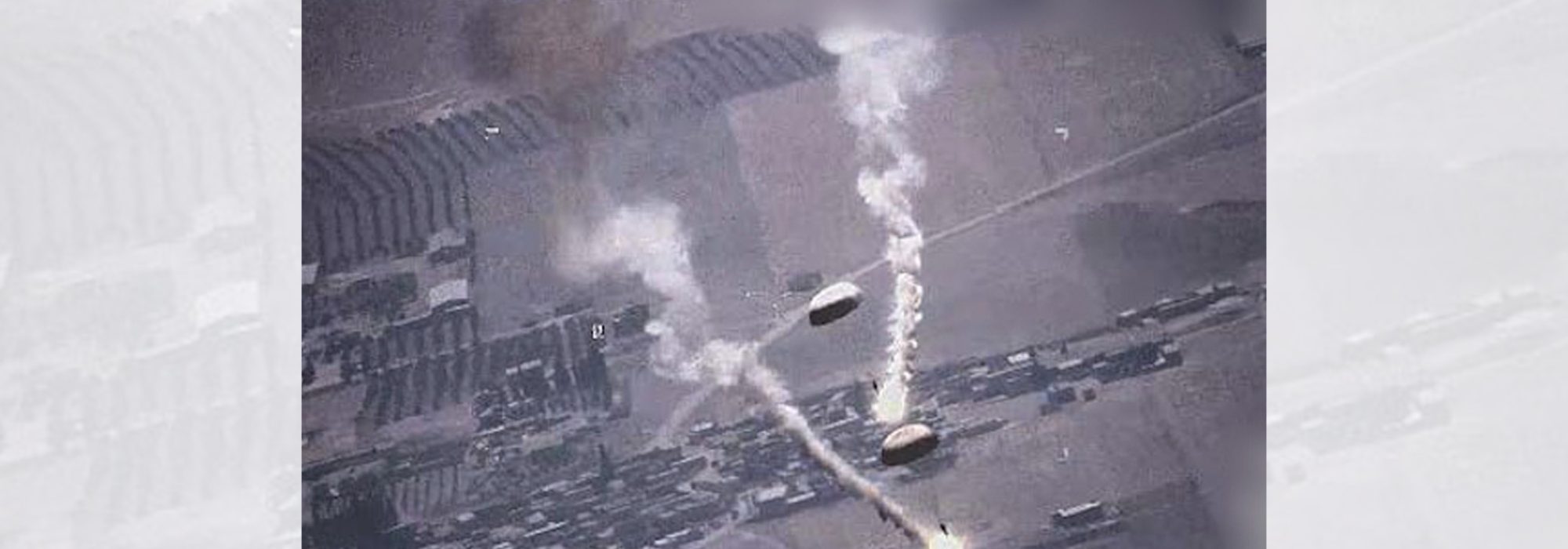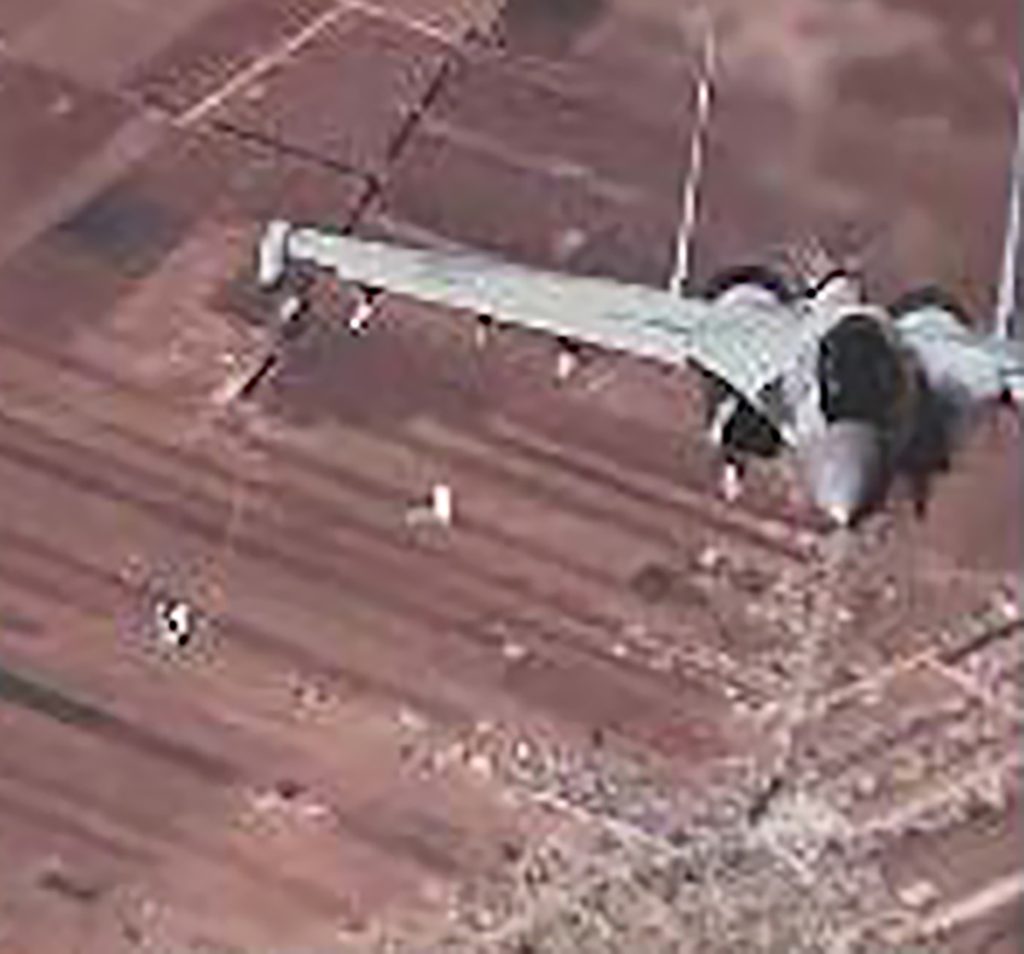U.S. Drones, Russian Fighters Clash (Again) Over Syria
By Chris Gordon
Russian fighter aircraft harassed U.S. MQ-9s over Syria multiple times in July, dropping flares in their flight path and interfering with their flight paths, as the Russians escalated to “a new level” of aggressive behavior, according to U.S. officials.
On July 5 at around 10:40 a.m. local time, three U.S. MQ-9 Reaper drones on a mission against ISIS targets were intercepted by three Russian Su-35 fighter jets, flying “harassing” maneuvers, according to U.S. military officials. The following morning, Russian Su-34 and Su-35 fighters intercepted two MQ-9s conducting another anti-ISIS mission. One day later, Russian jets interfered with three MQ-9s again over a period of about two hours.
The conflict is arising in western Syria, an area where Russia operates freely and where U.S. forces operate only after alerting the Russians to their presence. That kind of deconfliction has been taking place for years. What’s new is the way Russia is responding when U.S. drones fly in that airspace.
“These events represent another example of unprofessional and unsafe actions by Russian air forces operating in Syria, which threaten the safety of both coalition and Russian forces,” Air Forces Central Commander Lt. Gen. Alexus G. Grynkewich said in July 6 statement. Grynkweich condemned Russia’s “dangerous behaviors.”
In the July 7 incident, U.S. forces were en route to attack Usamah al-Muhajir, an ISIS leader, who was killed on the mission. No civilians were killed.
Grynkewich said in a July 7 statement—before the strike—that “during the almost two-hour encounter, Russian aircraft flew 18 unprofessional close passes that caused the MQ-9s to react to avoid unsafe situations.”
To demonstrate the Russian behavior, the Pentagon swiftly declassified and released video of the first two incidents captured from the Reapers’ on-board cameras.
Among the Russian tactics, they have dropped parachute flares and engaged afterburners in front of the U.S. drones. The MQ-9 Reapers carry air-to-ground missiles as well as intelligence, surveillance, and reconnaissance capabilities. The U.S. is not threatening Russian or Syrian assets, only ISIS, U.S. officials said.
“We have made it clear that we remain committed to the defeat of ISIS throughout the region,” CENTCOM Commander Army Gen. Michael “Erik” Kurilla added in a statement. “ISIS remains a threat, not only to the region but well beyond.”
Grynkewich and other U.S. military officials continue to raise alarm over Russian flying behavior over Syria, saying it endangers both sides’ forces and risks inhibiting U.S. operations against ISIS, which Russia ostensibly supports.
F-22s were sometimes used in the past to escort the U.S. strike missions on ISIS militants in northeast Syria as part of Operation Inherent Resolve, the anti-ISIS campaign, because of the threat from Russian planes, but the U.S. has diminished airpower presence in the region to focus more on the Pacific and Europe since the ISIS self-declared caliphate was defeated. AFCENT currently has around two and a half squadrons of fourth-generation F-16s and F-15Es fighters, as well as A-10s and MQ-9s based in the region.
A Russian Ministry of Defense official, Oleg Gurinov, said U.S. coalition drones were spotted flying over an area where Russian and Syrian forces were conducting drills.
“We remind that the Russian side bears no responsibility for the safety of flight of unmanned aerial vehicles (UAVs), which were not agreed with the Russian side,” Gurinov said, according to the state-owned TASS news agency.
Pentagon Press Secretary Air Force Brig. Gen. Patrick S. Ryder dismissed Russian accounts in a July 6 briefing. “We have been in Syria for many years now fighting ISIS as part of an international coalition,” Ryder said. “That is no surprise to anyone. … To suggest that somehow, you know, this is our fault, it’s ridiculous.”
Russia has also challenged two French Rafale aircraft flying near the Iraqi-Syrian border. “The pilots maneuvered in order to control the risk of an accident before continuing their patrol,” the French military said in a tweet.
Grynkewich said Russia’s interference undermines American efforts to defeat the remnants of ISIS—a goal Russia ostensibly supports.
“We urge Russian forces in Syria to cease this reckless behavior and adhere to the standards of behavior expected of a professional air force so we can resume our focus on the enduring defeat of ISIS,” Grynkewich said. “The safety of military personnel and the success of the mission against ISIS depend on the professional and responsible conduct of all forces operating in the region.”
Close Encounters
After a pause in Russian air activity near U.S. positions over the winter, Russian warplanes resumed regular overflights of U.S. positions in Syria beginning in March. That same month, a U.S. base in northeast Syria was targeted in a strike by Iranian-backed militia in an incident that killed an American contractor.
The U.S. has around 900 troops in Syria to assist its Kurdish allies in fighting the remnants of ISIS. Russia is supporting the regime of Bashar Al-Assad. Grynkewich has said that Russian jets violate mutually agreed-upon deconfliction protocols designed to reduce the risk of inadvertent conflict in Syria and to keep the two nations’ air forces separate in eastern Syria. Since spring, Air Forces Central has said Russian jets have come as close as 500 feet from manned U.S. aircraft and considerably closer to uncrewed drones. Russians have also overflown U.S. troops dozens of times in violation of protocol.
The U.S. recently deployed F-22s to the region. A-10s and other U.S. aircraft have been used to patrol Arabian Gulf waters, after Tehran stepped up seizures of commercial vessels. Iran has captured nearly 20 commercial craft since 2021, according to the U.S.
Naval Forces Central said the guided-missile destroyer USS McFaul has successfully blocked attacks on two commercial vessels by chasing away Iranian aggressors.
Russia and Iran have become increasingly cooperative since Russia’s invasion of Ukraine last year, with Iran providing drones to Russia, among other cooperative efforts, including their mutual support for the Assad government in Syria.
Grynkewich said Russia should honor its agreements and operate in a more responsible way over Syria.

